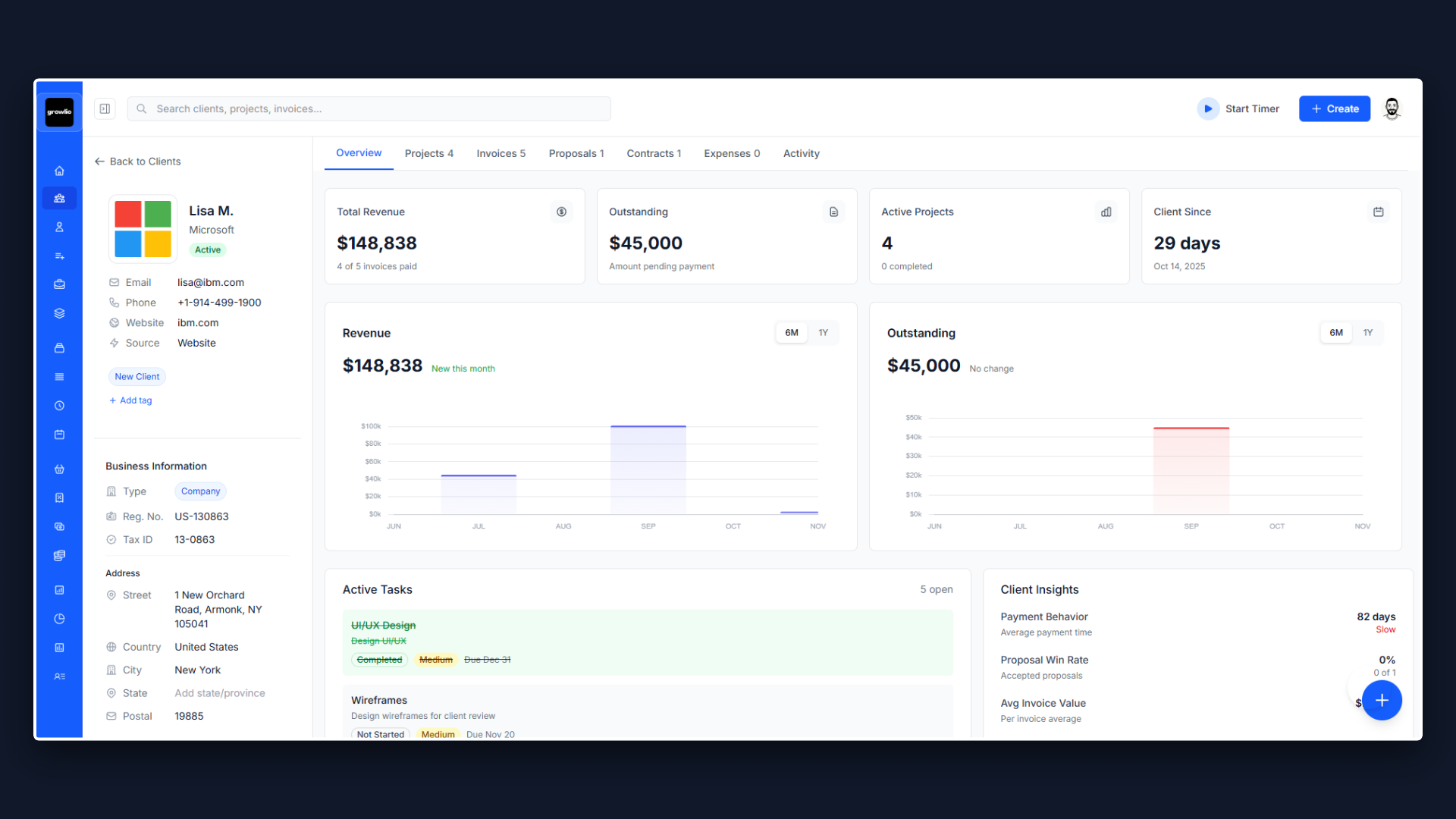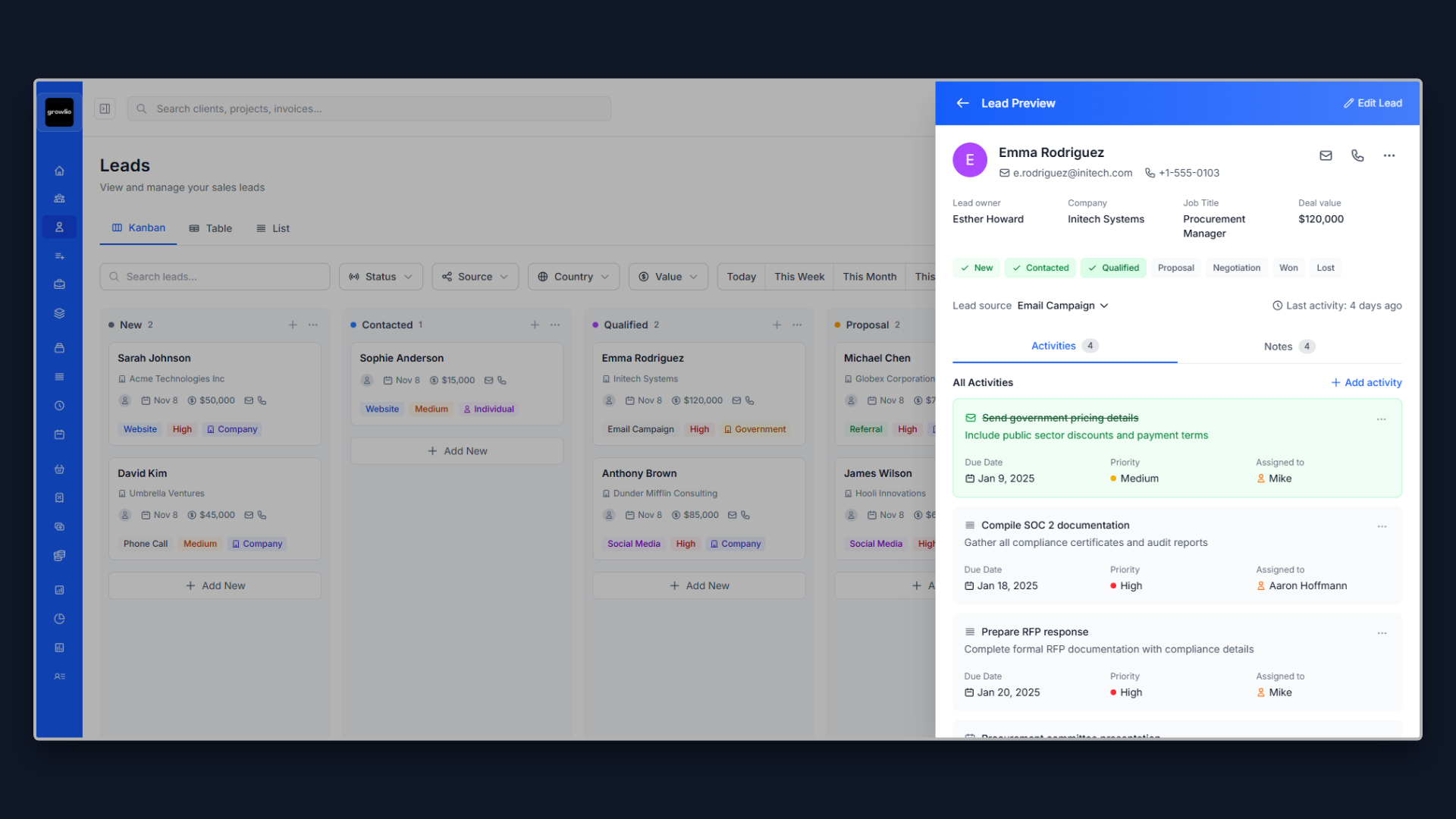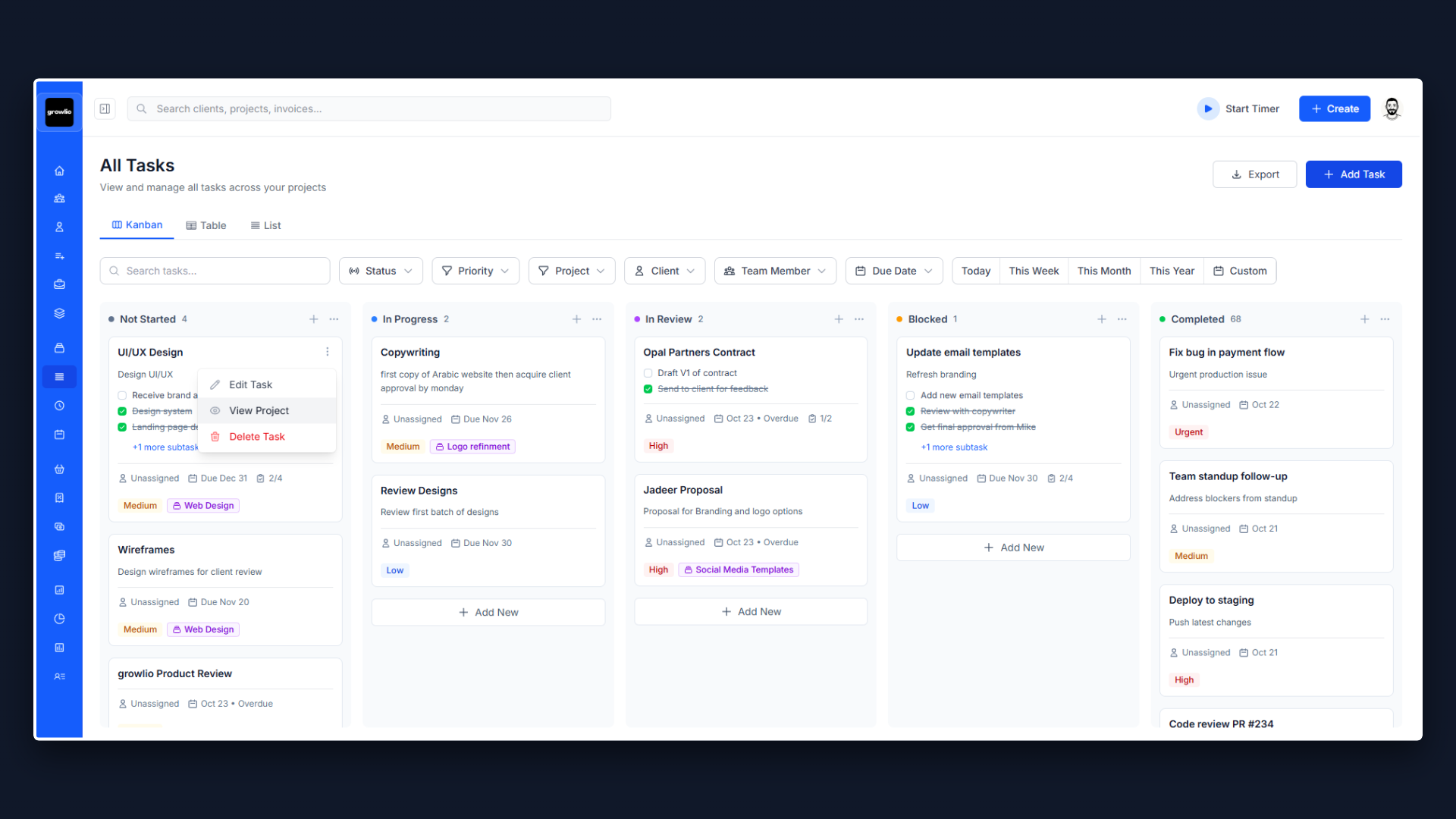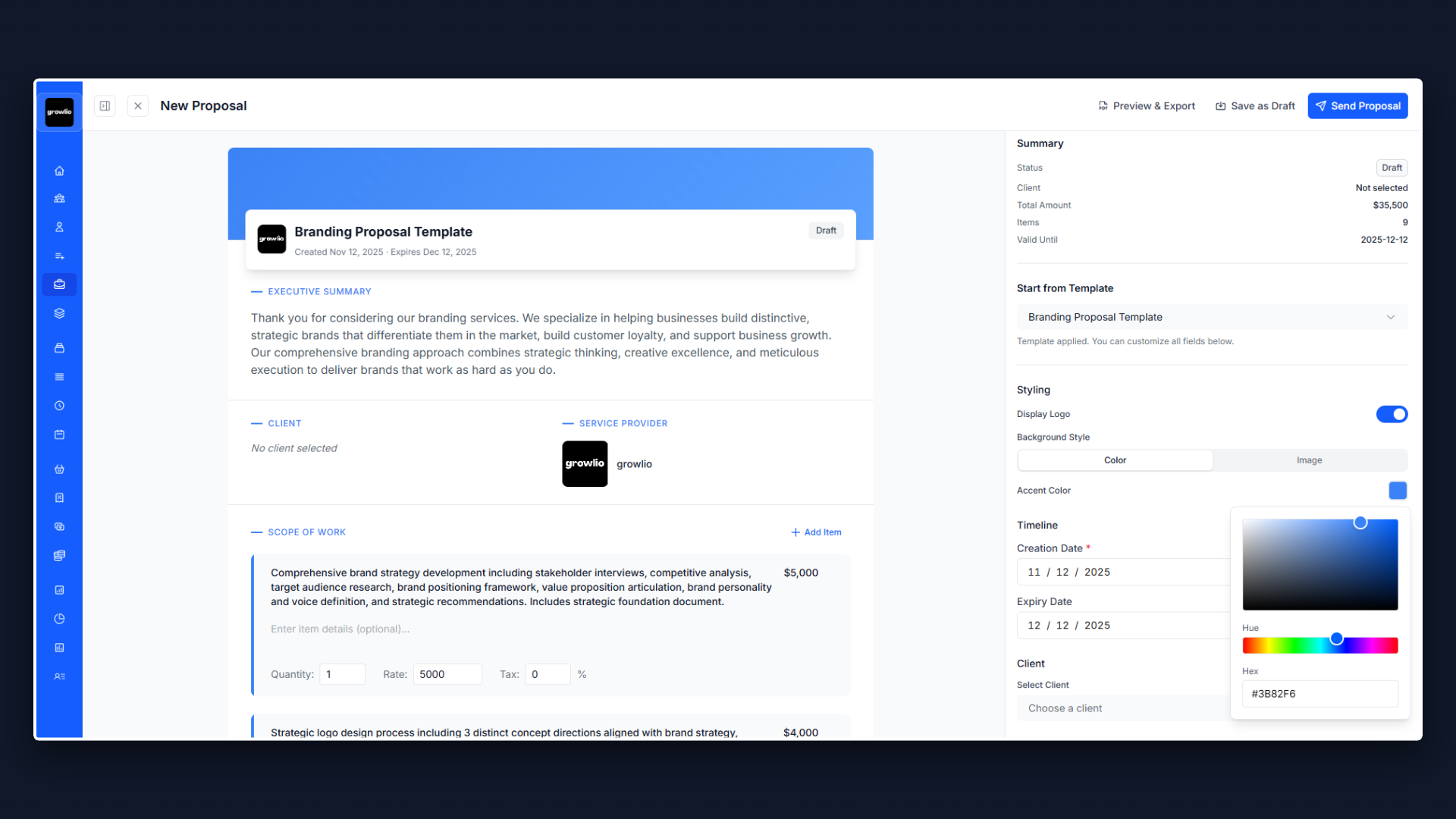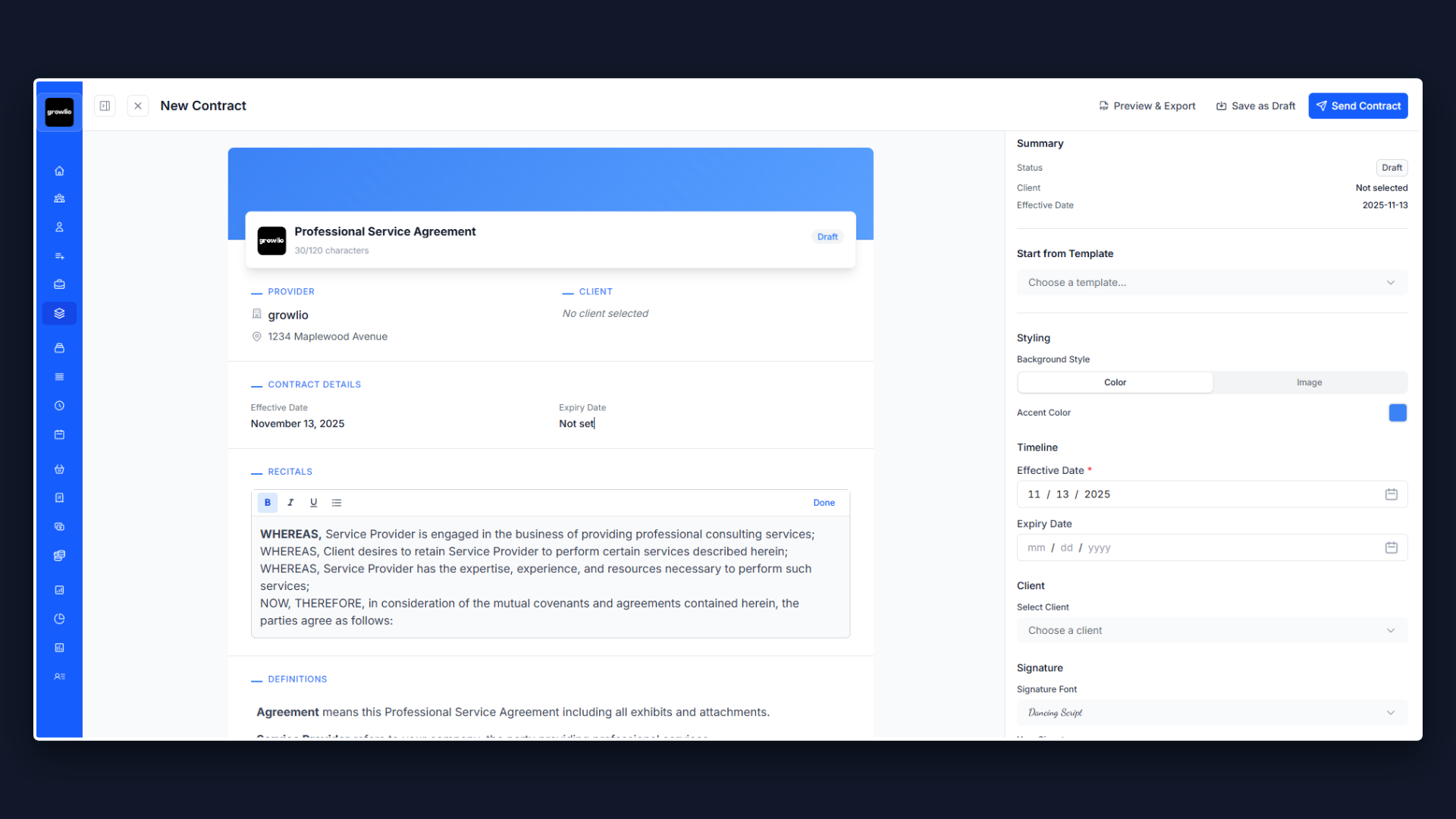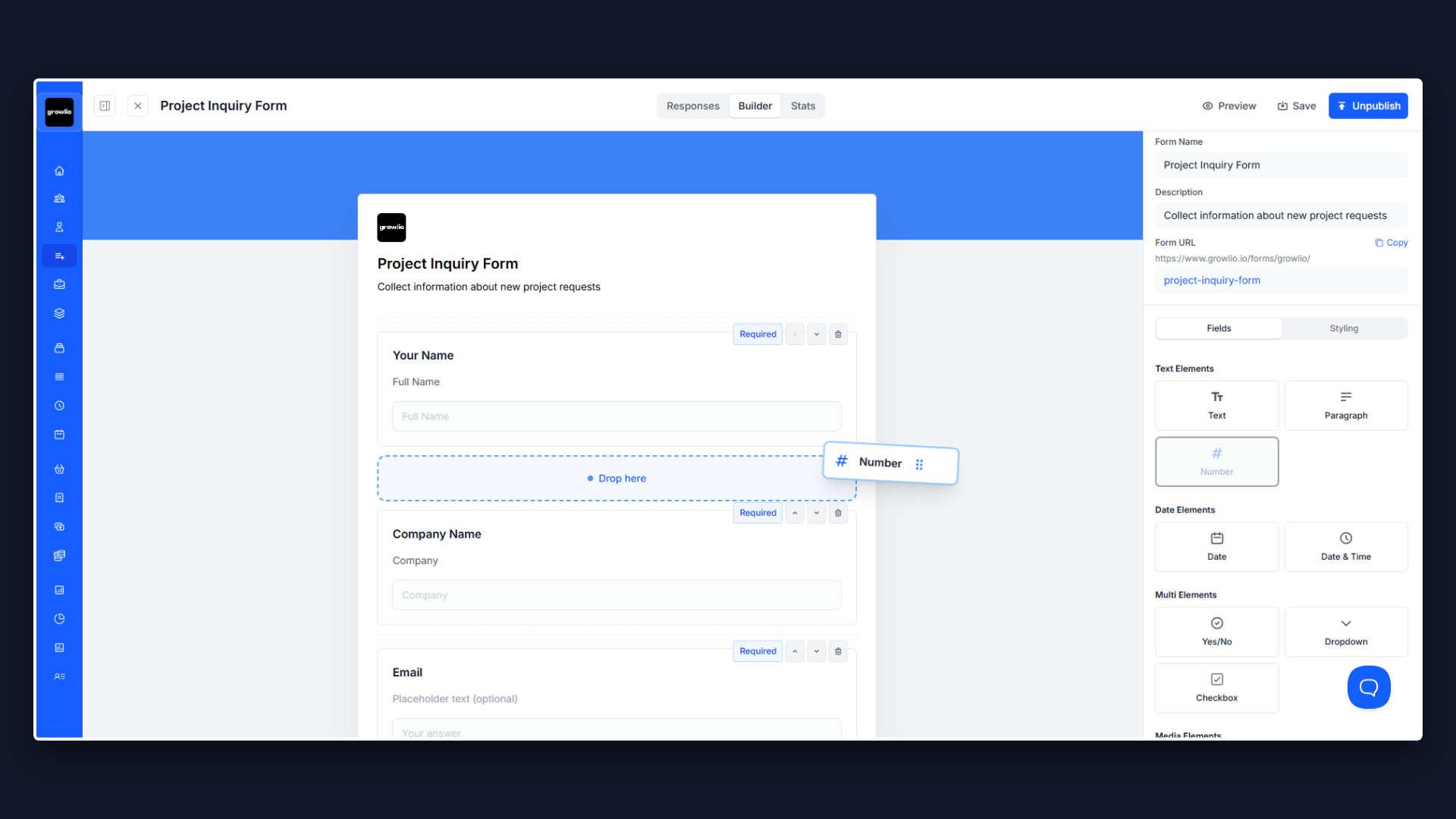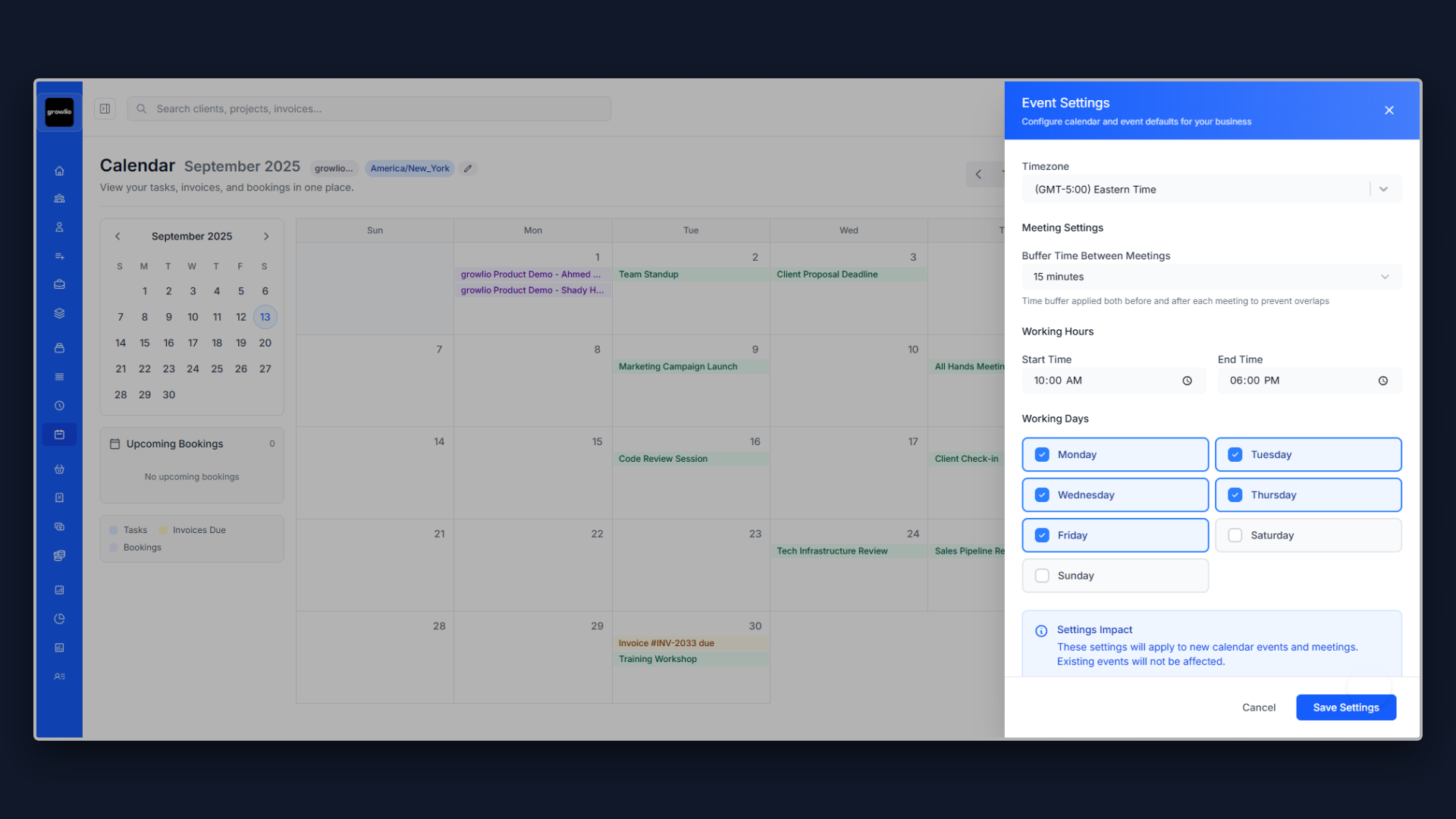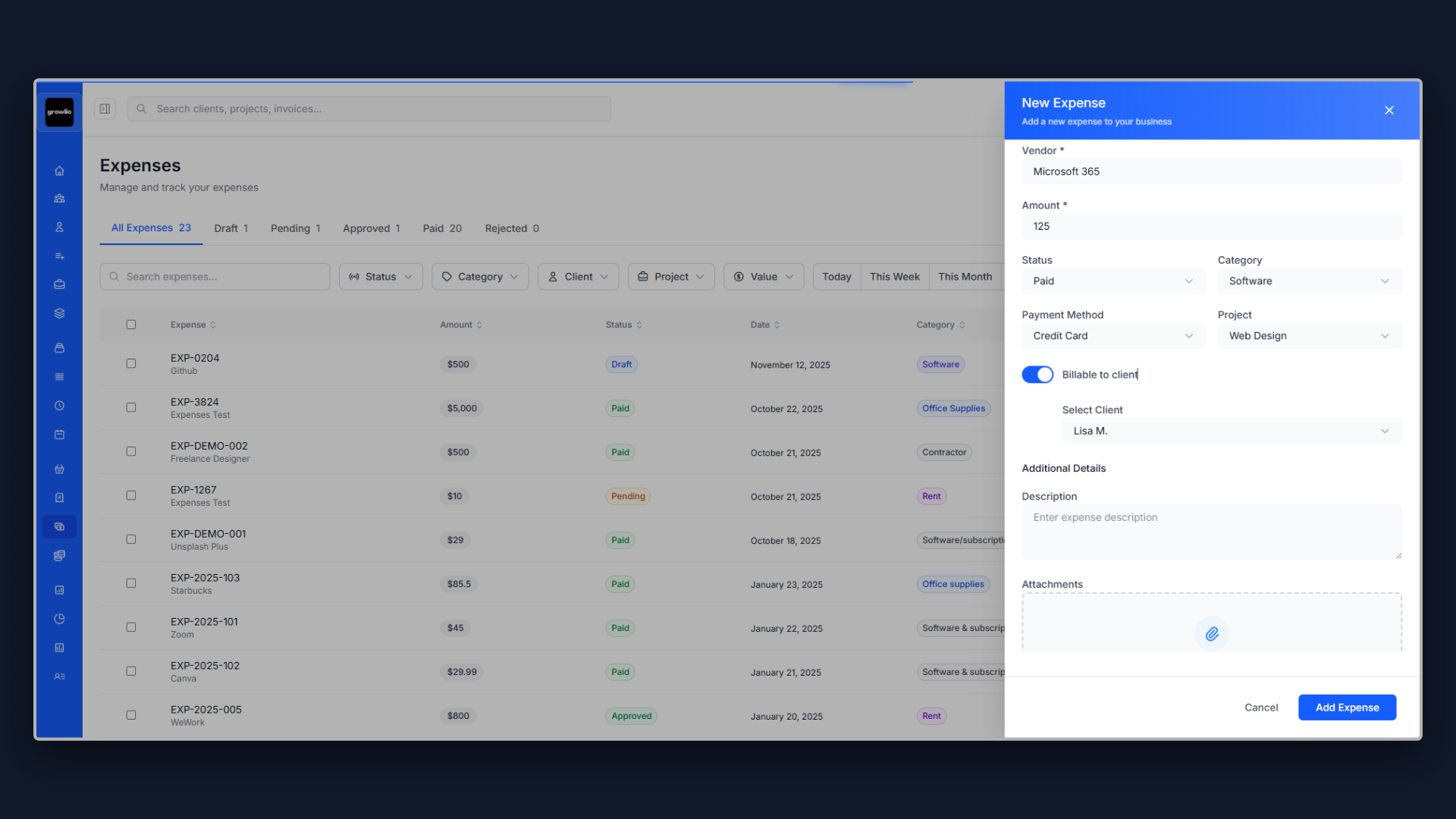Why Your Project Management Proposal Demonstrates Your Organizational Mastery
In project management, you're not just selling oversight—you're selling certainty in an uncertain environment. Before a company hands you responsibility for a multi-million dollar initiative, critical timeline, or complex cross-functional effort, they need confidence you can navigate complexity, manage stakeholders, and deliver results when others have failed.
The project management services industry generates over $6 billion annually in the U.S., with organizations increasingly recognizing that the difference between successful and failed initiatives often comes down to professional project management. Yet 70% of projects fail to meet their original goals and business intent, and poor project management is cited as the primary reason.
Your project management proposal needs to accomplish several critical objectives: demonstrate you understand the project complexity and risks, prove you have a methodology that prevents common failure modes, showcase your ability to manage stakeholders and expectations, address concerns about budget overruns and scope creep, and differentiate you from the dozens of PMP-certified candidates who list the same credentials. This is your opportunity to prove that professional project management isn't overhead—it's the difference between success and expensive failure.
1. Open With Project Failure Risks, Not PM Credentials
The biggest mistake project managers make is leading with certifications: "I'm a PMP with 15 years of experience managing projects..." Your prospect doesn't care about your PMP yet. They care about the specific risks threatening their project.
Start by demonstrating you understand what could go wrong with their specific initiative. For a software implementation, open with: "Enterprise software implementations fail 50-70% of the time—not because the software doesn't work, but because of poor change management, underestimated scope, inadequate resource allocation, and misaligned stakeholder expectations. Your implementation involves migrating data from three legacy systems, training 500+ users across multiple locations, integrating with existing tools, and maintaining business continuity during the transition. Without rigorous project management, you risk budget overruns (average 27% over budget), timeline delays (average 40% longer than planned), user adoption failure, and ultimately abandoning the project after sinking significant investment."
For a construction project: "Commercial construction projects face relentless pressure from material cost volatility, labor shortages, permitting delays, weather disruptions, and coordination challenges across multiple trades. Your 50,000 square foot facility needs to open by Q4 to capture holiday season revenue. Every week of delay costs you $200,000 in lost sales plus carrying costs on debt. You need a project manager who has navigated these exact challenges, knows where projects typically derail, and has systems to keep everything on track despite inevitable obstacles."
This approach immediately shows you understand the stakes and the specific risks they face. Now they're ready to hear how you'll manage these risks.
2. Define Project Scope With Precision to Prevent Scope Creep
Scope creep kills projects. Vague scope definitions create endless conflict about what's included. Be exhaustively clear about scope boundaries.
Structure scope definition precisely: Project Scope - In Scope: Overall project planning, scheduling, and coordination. Stakeholder identification and communication management. Budget development, tracking, and variance reporting. Resource allocation and team coordination across 5 departments. Risk identification, assessment, and mitigation planning. Vendor selection, contract negotiation, and vendor management. Quality assurance and acceptance testing coordination. Change request evaluation and approval process management. Weekly status reporting and monthly executive presentations. Issue and escalation management. Project documentation and knowledge transfer.
Explicitly Out of Scope: Technical implementation work (handled by technical team/vendors). Functional subject matter expertise (provided by client SMEs). Budget approval authority (remains with project sponsor). Vendor contract signing authority (handled by procurement/legal). Personnel performance management (remains with functional managers). Post-implementation operational support (transitions to operations team). Strategic decision-making on business requirements (steering committee responsibility).
Project Assumptions: Project sponsor available for weekly 30-minute check-ins. Steering committee meets bi-weekly for decisions. Subject matter experts allocated 10-20% time to project. Budget and resources approved as outlined in proposal. Critical decisions made within agreed timeframes (48-72 hours). Change request process followed for all scope modifications.
Dependencies and Constraints: Vendor selection completed by [date] to maintain timeline. Infrastructure readiness by [date] (dependency on IT team). Regulatory approvals obtained by [date]. Key personnel availability during critical phases. Budget allocation confirmed by fiscal year start.
This level of detail prevents the constant "is that included?" conversations that derail projects and create friction.
3. Present Your PM Methodology With Visual Clarity
Clients need to understand your project management approach without wading through PMI jargon. Present your methodology clearly, visually, and in plain language.
Outline your approach in clear phases:
Phase 1: Project Initiation (Weeks 1-2)
Stakeholder identification and analysis (power/interest mapping). Project charter development and approval. Success criteria and KPI definition. Risk register creation with initial risk assessment. Communication plan development (who needs what information, when). Resource planning and team mobilization. Project management tools setup and access provisioning. Kick-off meeting with all stakeholders.
Phase 2: Detailed Planning (Weeks 2-4)
Work breakdown structure (WBS) creation to level 4-5 detail. Detailed schedule development with dependencies and critical path. Resource loading and capacity planning. Budget breakdown by phase, workstream, and resource type. Procurement plan and vendor evaluation criteria. Quality management plan and acceptance criteria. Change management and training strategy. Risk mitigation plan with specific actions and owners.
Phase 3: Execution & Monitoring (Weeks 5-20)
Weekly team coordination meetings and status tracking. Daily standup meetings during critical phases (optional). Progress tracking against baseline schedule and budget. Issue log management and resolution tracking. Risk monitoring and mitigation action tracking. Stakeholder communication per communication plan. Vendor coordination and deliverable acceptance. Change request evaluation and approval facilitation. Quality checkpoints and testing coordination.
Phase 4: Project Closeout (Weeks 21-22)
Final deliverable verification and acceptance. Project documentation completion and archiving. Lessons learned workshop with team and stakeholders. Performance metrics reporting against original success criteria. Transition to operations team with knowledge transfer. Final budget reconciliation and variance analysis. Stakeholder satisfaction survey. Project closure report and presentation.
This phased approach shows you have a systematic process while making it accessible to non-PM audiences.
4. Address Stakeholder Management as a Core Competency
Technical project management is table stakes. What differentiates great PMs is stakeholder management—the soft skills that keep everyone aligned despite competing interests.
Explain your stakeholder approach: "Successful projects require more than Gantt charts—they require managing people, expectations, and organizational politics. Our stakeholder management approach includes:
Stakeholder Mapping and Analysis: We identify all stakeholders (not just obvious ones) and map them by power, interest, and influence. We develop specific engagement strategies for each stakeholder group. We identify potential resistors early and develop strategies to address concerns. We create coalition of supporters to build momentum.
Expectation Management: We set realistic expectations upfront, avoiding over-promising. We communicate early and often about challenges and delays. We frame bad news with solutions, not just problems. We celebrate small wins to maintain momentum and morale.
Communication Tailoring: Executives get high-level dashboards focused on budget, timeline, and business impact. Steering committee gets decision-focused updates with clear options and recommendations. Working team gets detailed status, blockers, and action items. End users get change communications focused on 'what's in it for me.'
Conflict Resolution: We surface conflicts early before they escalate. We facilitate difficult conversations between stakeholders with competing priorities. We escalate appropriately when consensus can't be reached at working level. We document decisions to prevent revisiting settled issues.
Political Navigation: We understand organizational dynamics and informal power structures. We build relationships with key influencers beyond the org chart. We position project success in terms of stakeholder individual goals. We give credit generously and share success broadly."
This demonstrates you understand that project success depends as much on people skills as technical PM competency.
5. Create a Realistic Timeline With Buffer Built In
Overly optimistic timelines doom projects from the start. Build in appropriate buffer and explain your timeline assumptions clearly.
Present timeline with transparency:
Overall Timeline: 22 Weeks (5.5 Months)
Critical Path Activities: Vendor selection and contract negotiation (weeks 2-6) - longest lead time item. Infrastructure setup and configuration (weeks 7-12) - dependency for testing. Data migration and validation (weeks 13-16) - highest risk activity. User acceptance testing (weeks 17-19) - requires full user participation. Training delivery (weeks 18-20) - parallel with UAT. Go-live and stabilization (weeks 21-22).
Timeline Assumptions: Decisions made within 48-72 hours of escalation. Resources available as planned (no unexpected departures or competing priorities). Vendor delivers on committed timelines. No major scope changes requiring re-planning. Budget approvals processed within standard timeframes.
Built-in Buffer: 15% schedule buffer for unforeseen issues (included in 22-week timeline). Two-week contingency for vendor delays or technical issues. Parallel paths where possible to compress timeline. Early start on long-lead items to create schedule float.
Timeline Risks: Vendor selection delays (most common cause of early timeline slippage). Scope creep from additional requirements discovered during planning. Resource availability issues due to competing priorities. Technical complexity greater than anticipated. Stakeholder decision delays.
Acceleration Options (If Needed): Add resources to critical path activities (increases budget 15-25%). Reduce scope through phased approach (Phase 1 for critical features, Phase 2 for nice-to-haves). Parallel workstreams with additional coordination overhead. Weekend/evening work during critical phases (requires premium rates).
This realistic timeline with clear assumptions and risks builds credibility and sets appropriate expectations.
6. Present Budget With Contingency Clearly Identified
Project budget overruns create the biggest credibility problems for PMs. Present budgets with appropriate contingency and explain what could consume it.
Structure budget clearly: Project Management Services: Project Manager (full-time, 22 weeks): $88,000. Assistant PM (part-time, 15 weeks): $22,500. PM tools and software licenses: $3,500. Subtotal PM Services: $114,000
Project Execution Costs (Estimates): Software licenses (500 users): $250,000. Implementation services (vendor): $180,000. Infrastructure and hosting (first year): $45,000. Data migration services: $65,000. Training development and delivery: $35,000. Travel and expenses: $12,000. Subtotal Execution Costs: $587,000
Contingency Reserve: Management reserve (10% of total): $70,000. For scope changes, unforeseen risks, and unknown unknowns. Requires sponsor approval to access. Unused portion returns to sponsor.
Total Project Budget: $771,000
What Typically Consumes Contingency: Scope changes requested by stakeholders (most common). Technical issues requiring additional vendor services. Extended timeline due to delays (additional PM and resource costs). Data quality issues requiring additional cleanup/migration effort. Additional training or change management needs. Regulatory or compliance requirements discovered mid-project.
Budget Control Measures: Weekly budget tracking with variance reporting. Change request process for all scope additions with budget impact. Monthly forecast updating based on actuals and trends. Early warning system when trending toward overrun. Approval requirements for contingency access.
This transparency about contingency demonstrates maturity and builds trust rather than hiding buffer in padded estimates.
7. Address Risk Management Proactively
Every project has risks. The question is whether you'll manage them proactively or reactively. Show you've already identified likely risks and have mitigation strategies.
Present preliminary risk assessment: Top 5 Project Risks (Preliminary):
Risk 1: Vendor Delays
Probability: Medium | Impact: High
Mitigation: Build vendor delivery timeline into contract with penalties. Identify backup vendors for critical components. Start vendor evaluation early to maximize selection time. Weekly vendor status calls with escalation process.
Contingency: Parallel development of workaround solutions. Scope reduction if vendor cannot deliver.
Risk 2: Resource Availability
Probability: Medium | Impact: Medium
Mitigation: Secure resource commitments in writing from functional leaders. Identify backup resources for critical roles. Build 15% slack in resource plan. Create detailed onboarding plan to accelerate replacements if needed.
Contingency: Contract temporary resources if internal resources unavailable. Adjust timeline if critical resources lost.
Risk 3: Scope Creep
Probability: High | Impact: Medium
Mitigation: Rigorous change request process with budget/timeline impact analysis. Steering committee approval required for scope changes. Regular scope reviews to catch drift early. Clear requirements documentation and sign-off.
Contingency: Phased approach deferring non-critical requirements to Phase 2. Timeline/budget increase if scope changes approved.
Risk 4: User Adoption Resistance
Probability: Medium | Impact: High
Mitigation: Early and frequent communication about project benefits. User involvement in requirements and testing. Comprehensive training program. Executive sponsorship and visible support. Super-user program creating internal champions.
Contingency: Extended support period post-launch. Additional training and change management resources.
Risk 5: Technical Complexity Underestimated
Probability: Low | Impact: High
Mitigation: Detailed technical assessment during planning phase. Proof of concept for highest-risk integrations. Vendor technical resources committed contractually. Architecture review by independent expert.
Contingency: Phased rollout to reduce complexity. Additional vendor services if needed. Scope reduction eliminating complex integrations.
This proactive risk identification shows you've thought ahead and won't be blindsided by predictable problems.
8. Differentiate Yourself With Lessons Learned From Past Projects
Generic experience claims don't convince clients. Share specific lessons learned from past projects that demonstrate wisdom earned through experience.
Format lessons learned clearly: Construction Project - $15M Office Buildout
Challenge: 50,000 sq ft office renovation needed completion by Q4 for scheduled move-in. Multiple trades, permitting complexity, occupied building constraints.
Key Lesson: Early permitting engagement saved 6 weeks. We involved city inspectors in design review before submitting formal permits, identifying issues upfront rather than in rejection cycles. This accelerated approval from typical 8-10 weeks to 4 weeks.
Result: Project completed 2 weeks early, 5% under budget. Occupied floors maintained operations throughout construction. Zero safety incidents.
What We'll Apply to Your Project: Early engagement with all regulatory/approval authorities. Pre-submission review meetings. Parallel permit applications where possible.
Software Implementation - $2M ERP Rollout
Challenge: 300-person manufacturing company replacing 20-year-old system. High resistance to change, limited IT resources, tight budget.
Key Lesson: Super-user program was game-changer for adoption. We identified 15 power users across departments, gave them early access and advanced training, and positioned them as internal experts. They became champions who trained peers and reduced resistance.
Result: 92% user adoption in first month (target was 80%). Support tickets 40% lower than comparable implementations. Project completed on time, 8% under budget.
What We'll Apply to Your Project: Super-user identification and early engagement. Train-the-trainer model. Internal champion development.
Product Launch - $5M Go-to-Market Initiative
Challenge: Coordinating product development, marketing, sales training, distribution setup for simultaneous global launch. Eight-month timeline, 50+ stakeholders across regions.
Key Lesson: Weekly 15-minute standups with all workstream leads prevented coordination issues. Initially we did monthly meetings, but issues festered. Shifting to quick weekly syncs caught conflicts early when easy to resolve.
Result: Successful launch in all markets on same day. 120% of first-month revenue target. Minimal post-launch firefighting.
What We'll Apply to Your Project: Frequent, short coordination meetings over infrequent long ones. Early conflict detection. Quick decision-making cadence.
These specific, tactical lessons demonstrate you've learned from experience and will apply that wisdom to their project.
9. Define Success Metrics Beyond On-Time and On-Budget
Every PM claims they'll deliver on time and on budget. Define success more comprehensively to show you think beyond the basics.
Present comprehensive success metrics: Traditional Success Metrics: On-time delivery: Project completion by [date] ± 1 week. On-budget delivery: Total spend within approved budget + 5%. Scope delivery: 100% of must-have requirements, 80%+ of should-have requirements.
Stakeholder Success Metrics: Sponsor satisfaction: 4.0+ out of 5.0 on satisfaction survey. Team satisfaction: 4.0+ out of 5.0 on team member survey. End-user adoption: 85%+ active usage within 30 days of launch. Stakeholder engagement: 90%+ attendance at steering committee meetings.
Business Outcome Metrics: Business case validation: Achieve 80%+ of projected benefits within 6 months. Process improvement: Achieve targeted efficiency gains (specific to project goals). Revenue/cost impact: Deliver projected financial impact within 10%. User productivity: Meet defined productivity improvement targets.
Project Management Excellence Metrics: Risk management: Zero high-impact surprises (all major risks identified proactively). Change management: All scope changes processed through formal change request process. Communication effectiveness: 4.0+ rating on communication quality survey. Knowledge transfer: 90%+ of operations team report feeling prepared to support solution.
How We'll Measure: Weekly KPI dashboard tracking all metrics. Monthly executive scorecard. Project closeout assessment against all metrics. 30-day and 90-day post-launch benefit validation.
This comprehensive definition of success shows you think beyond just completing tasks to delivering actual business value.
10. End With Clear Engagement Process and Next Steps
Make it frictionless to engage your services with clear next steps and transparent onboarding process.
"We appreciate the opportunity to submit this proposal and look forward to managing this critical project. Here's how to get started:
Step 1: Proposal Discussion
Schedule a 60-minute call to discuss the proposal, answer questions, and refine approach based on your feedback. We can adjust scope, timeline, or approach based on your priorities and constraints. [Calendar link] or reply to this email.
Step 2: Contract and Kickoff
Upon agreement, we'll provide a standard project management services agreement. We can typically begin within 3-5 business days of signed agreement. First week focuses on stakeholder interviews and project charter development.
Step 3: First 30 Days
Week 1: Stakeholder interviews, project charter, initial risk assessment. Week 2: Detailed planning, schedule development, resource planning. Week 3: Communication plan, governance structure, tool setup. Week 4: Project kickoff meeting, execution begins.
What We Need From You: Project sponsor identified and committed to weekly check-ins. Steering committee members identified and committed to bi-weekly meetings. Initial stakeholder list and organizational context. Access to relevant documentation (prior attempts, requirements, business case). Budget approval and resource commitment confirmation.
Questions or Concerns?
Contact [PM Name] at [email] or [phone]. Schedule a call at [calendar link]. We're happy to discuss how we can tailor our approach to your specific situation and constraints."
This clear process reduces decision friction and shows you're organized from first contact.
Final Thoughts on Project Management Proposals
Your project management proposal is your first project deliverable. It demonstrates your organizational thinking, your communication clarity, and your attention to detail. If your proposal is vague, disorganized, or generic, clients will assume your project management will be too.
The project managers who win premium engagements prove they understand the specific project risks and failure modes, demonstrate a clear, systematic methodology that prevents common problems, show stakeholder management maturity beyond technical PM skills, set realistic expectations with appropriate buffers and contingencies, and differentiate through specific lessons learned, not generic credentials.
Every proposal should be customized for the specific project and organization. Reference their specific project risks with data and insights. Include preliminary risk assessment showing you've thought ahead. Share relevant lessons learned from similar projects. Be transparent about timeline and budget assumptions. And always make next steps crystal clear.
Remember: a great project management proposal proves you understand what could go wrong with their specific project, demonstrates methodology that prevents predictable failure modes, sets realistic expectations while instilling confidence, shows wisdom earned from past projects, not just theoretical knowledge, and positions you as the steady hand that will navigate complexity and deliver results. Get these elements right, and you'll win projects even when you're not the cheapest option—because clients will recognize that professional project management is worth every penny.
